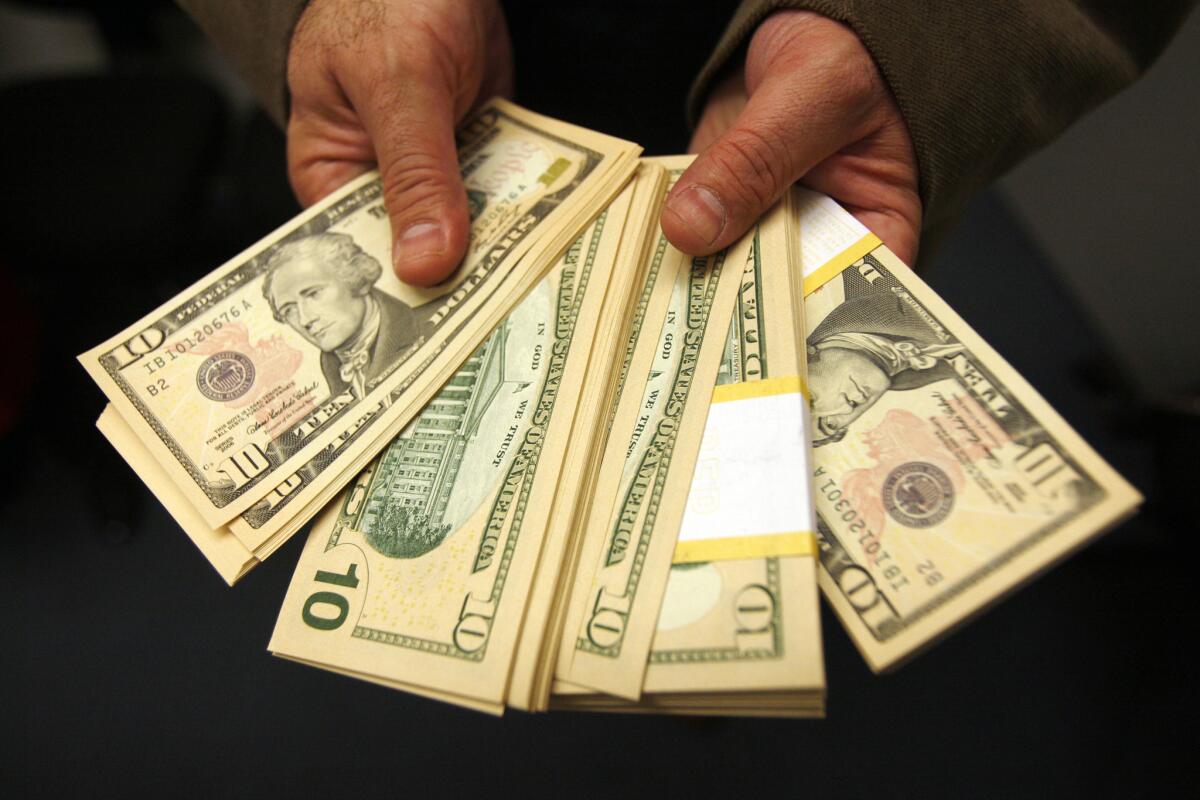Helping out is competition for men — when a woman asks

People compete for resources, mates and survival -- so why did we evolve the willingness to help each other out unconditionally?
Scientists aren’t exactly sure. But a new study, conducted by studying donors on a fundraising website, suggests that humans’ generous behavior -- or at least, male humans’ generous behavior -- may be a form of sexual competition, a sort of one-upsmanship that in prehistoric times may have been key to attracting a mate.
The research, published Thursday in the journal Current Biology and written by Nichola Raihani of University College London and Sarah Smith of the University of Bristol in the United Kingdom, found that men making donations on Web-based fundraising sites seem to engage in a behavior known as “competitive helping” -- jockeying to be “the most generous, particularly in the presence of attractive potential partners,” the researchers wrote.
Scientists had seen this before in experimental settings: Subjects behaved more generously when they were being watched, or got chosen more frequently for “interactions requiring cooperation” when they’d previously been seen being helpful.
But Raihani and Smith said that to their knowledge, their new study was the first to demonstrate the phenomenon in real life. Online fundraising sites were a perfect place to look. Donations are visible to all and recorded as they come in — providing would-be givers an opportunity to observe and react to other people’s pledges. Evoking a medieval jousting match where dashing knights compete for blushing ladies, Raihani and Smith referred to online fundraising in their paper as “a potential generosity tournament.”
They collected profile and donation data from 2,561 fundraising pages posted for the 2014 Virgin London Marathon and used the information to assess how attractiveness and gender affected donor behavior. They recruited volunteers to score fundraisers’ attractiveness by rating profile photos, and then looked connections between attractiveness levels and the size and sequence of the charitable gifts fundraisers received.
More-attractive fundraisers, both male and female, received more and larger donations and raised more money. Among female fundraisers, attractiveness also correlated with maximum donation size. To seek out instances of competitive helping, the team paid special attention to what happened online after “large donations” — gifts of £50 ($75) or more that were at least twice the size of the running average donation for each page.
Examining the responses of up to 15 donors following each large gift, the researchers found that when a large gift was provided by a male to an attractive female, subsequent men making donations gave an additional £28.35 ($42) — four times more than they gave on average in other situations. (Females making donations to attractive male fundraisers did not behave in the same way.)
“Overt generosity can be a competitive rather than a cooperative act,” the researchers concluded.
They said they did not think the men were competing in a “conscious or purposeful way.”
“We don’t think that males are seeing large donations from other males to attractive female fundraisers, and then thinking ‘Yeah, I’ll give more than him because she will find me more attractive then,’” Raihani said in a statement.
It was more likely, she added, that humans evolved to behave in the competitively generous manner because females chose mates who did so in the evolutionary past — allowing the trait to pass down to future generations.
For more on science and health, follow me on Twitter: @LATerynbrown







